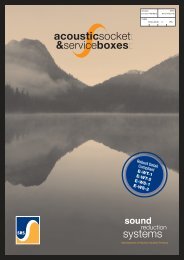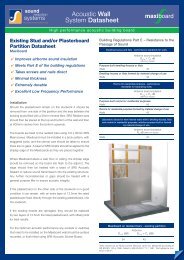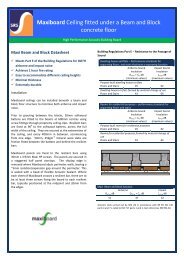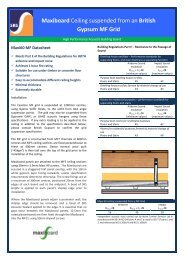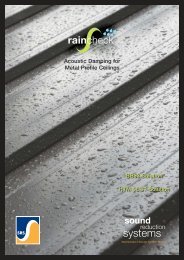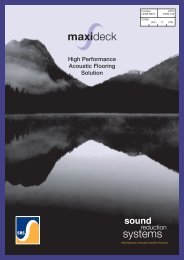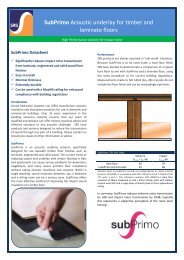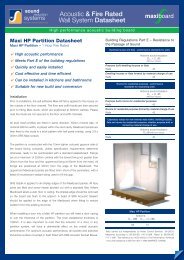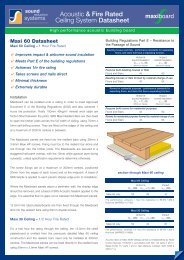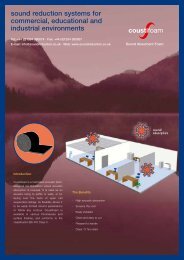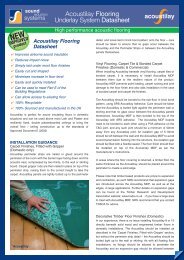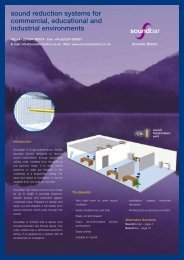Floors & Ceilings
SRS Ulimate Acoustic Solutions for Floors and Ceilings - Sound ...
SRS Ulimate Acoustic Solutions for Floors and Ceilings - Sound ...
You also want an ePaper? Increase the reach of your titles
YUMPU automatically turns print PDFs into web optimized ePapers that Google loves.
Additional Information<br />
Important Notes<br />
Approved Document E 2003 introduces a new unit of<br />
measurement for airborne sound, which places much more<br />
emphasis on low frequency performance. Due to the inherent<br />
difficulties of measuring low frequency noise, a significant<br />
tolerance on the accuracy of airborne sound test results<br />
should be expected. In practical test PASM have witnessed<br />
relatively large variations in airborne sound results by different<br />
measurement contractors on the same floor. Site conditions<br />
and workmanship can also limit reproducible results; therefore<br />
previous results should be viewed as indicative of<br />
performance only.<br />
Site conditions and installation standards vary. SRS cannot<br />
take responsibility for the performance of any installed system<br />
of which the Maxiboard or Acoustilay is only a part, or that has<br />
been installed incorrectly. Prior to installation it is necessary to<br />
identify and eliminate possible flanking paths that may<br />
compromise the acoustic performance of any SRS system.<br />
Acoustic Testing<br />
The final performance of a separating structure is assessed during<br />
a Sound Insulation (SI) test. In the case of both walls and floors,<br />
this is done by determining the level difference achieved when<br />
measuring a loud noise source through the structure, in<br />
accordance with BS EN ISO 140-4 ‘Measurement Procedure for<br />
Airborne Noise transmission’. The result is given as a single figure<br />
known as the Standardised Level Difference, or D nT,w , in decibels<br />
dB. A higher figure indicates better performance. A similar<br />
measurement made in a laboratory under ideal conditions gives<br />
the Sound Reduction Index (SRI) which is abbreviated to R w .<br />
Typically, an R w is around 5dB higher than the equivalent D nT,w<br />
figure. In Building Regulations Part E – Resistance to the Passage<br />
of Sound, relating to residential buildings, there is an additional<br />
frequency weighting, C tr which gives greater significance to<br />
performance at low frequencies.<br />
Separating floors have an additional test to assess the level of<br />
impact noise insulation. This is made using a calibrated tapping<br />
machine which delivers regular and repeatable impacts. The level<br />
in the receiver room is measured, giving a L nT,w (dB) figure.<br />
Similarly, the level measured in a laboratory is given as L nw dB. A<br />
lower figure indicates better performance.<br />
When Part E was introduced in 2003, a requirement for precompletion<br />
testing was added. The regulations now require 10%<br />
of each type of construction to be tested in order to show that<br />
they meet or exceed the Part E standards. The only alternative for<br />
new build projects is to use Robust Details. These are a range of<br />
constructions which have been demonstrated to exceed Part E<br />
standards by at least 5dB.<br />
26



